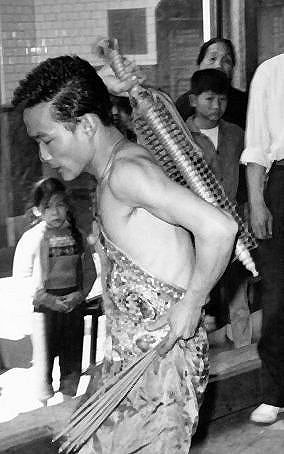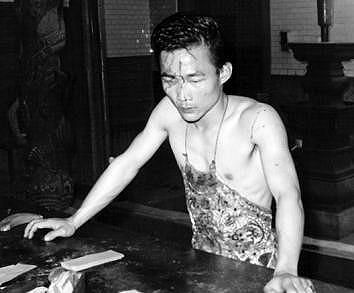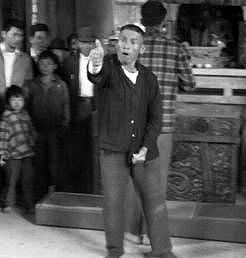Text Modified 1999-06-02
File last modified:

A young tâng-ki mortifies his flesh and offers godly advice in a city temple. He is shown here using a club with nails mounted points-outward to make a series of small puncture wounds with each strike. A network of tightly wound red cording on the nails both keeps them erect and prevents them from producing deep wounds. The tangi's ability to wound himself in this way without appearing to feel pain is taken as a sign of the reality of his trance.

The blood on his face comes from small holes in his scalp inflicted by the nail-studded club in the previous picture. Charms made by blotting the blood of a tâng-ki are particularly powerful against malign forces, which are intimidated by the divine presence that the blood represents.
In trance, a medium can speak with the authoritative voice of a god, and can therefore give useful advice on almost any topic about which humans are perplexed. Mediums are thus in a strong position to be the moral voice of godly and community opinion about the ways in which people should interpret the misfortunes that befall them, and on the misbehaviors that may have contributed to such misfortunes.

Not all possession is practiced by experienced tâng-ki, and not all of it involves mortification of the flesh. An established tâng-ki may act as a village oracle without needing to continue demonstrating his legitimacy at each possession through a show of mortification. And beginning aspirants to such a status, or those first called to it, may not practice mortification before their successful initiation. Sometimes (as apparently here) random by-standers may drop into trance, influenced, it is said, by being near the focal point of a concentration of divine power. Trance performance in such cases may be faint-like, or may involve striking poses as this man is doing. Speech, if any, is rarely intelligible.